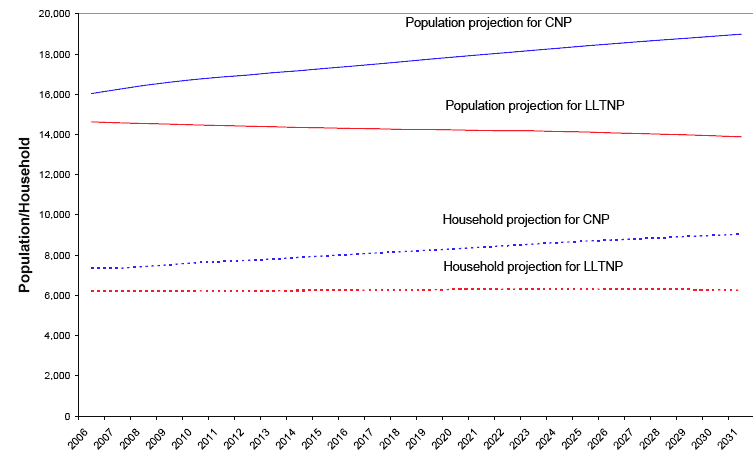
2.1 Summary of Results
Overall Change
Household type
Age Group
A summary table of the percentage increase in Population and Household Projections in Scotland’s National Parks and Scotland, 2006-2031 can be found in Annex A
Overall number of households (Tables 2.1a & 2.1b)
2.2.1 The number of households in Scotland is projected to increase from under 2.3 million to over 2.7 million between 2006 and 2031 — an increase of 19 per cent. The number of households in LLTNP is projected to rise much less - from 6,220 to 6,260, an increase of 1 per cent or 1 household per year. CNP has a larger percentage increase in the projected number of households than both LLTNP and Scotland as a whole — an increase of 23 per cent, from 7,350 to 9,050, or 68 per year.
2.2.2 The average household size is projected to decline in both National Parks - in LLTNP from 2.30 in 2006 to 2.15 in 2031, and in CNP from 2.12 to 2.01. Figure 2.1 shows the population and household projections for both National Parks from 2006 to 2031.
Figure 2.1: Population and household projections for both National Parks: 2006-2031

Type of household (Tables 2.1a & 2.1b)
2.2.3 Figures 2.2a and 2.2b show the projected number of households by household type, in 2006 and 2031 for each National Park. There is an increase in both National Parks in the number of single adult households. In LLTNP the number of single adult households increases from 1,760 (28 per cent of all households) in 2006 to 2,210 (35 per cent) by 2031. In CNP there is a larger increase from 2,520 (34 per cent) to 3,890 (43 per cent). Households containing two or more adults without children are set to decrease in LLTNP from 3,010 to 2,930, while in CNP the number of two or more adult households is projected to increase from 3,170 to 3,620. In both National Parks, there is also a projected increase in the number of one adult with children households. In LLTNP the increase is from 260 to 430, and in CNP the increase is from 370 to 640. In contrast, there are projected decreases in both National Parks in the number of two plus adults with children households. In LLTNP the decrease is from 1,200 to 700, and in CNP the decrease is from 1,290 to 900.
Figure 2.2a: Projected number of households in CNP by household type, 2006 and 2031
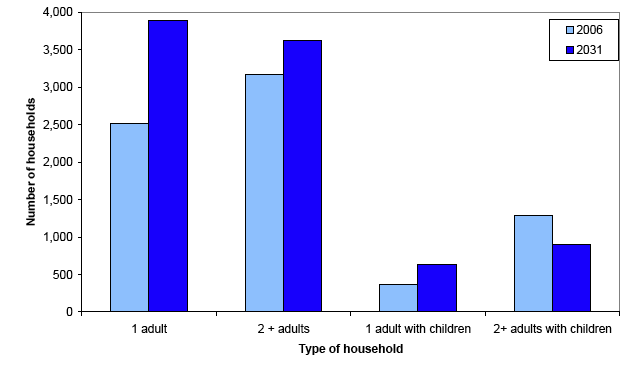
Figure 2.2b: Projected number of households in LLTNP by household type, 2006 and 2031
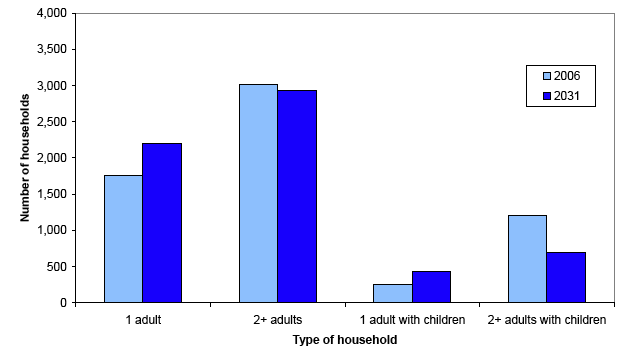
Age of head of household (Tables 2.2a & 2.2b)
2.2.4 Figures 2.3a and 2.3b show the projected number of households in 2006 and 2031, by age of the head of household (normally the first person entered in the Census form) for both National Parks. Population projections show that in both the National Parks there is a projected increase in the number of people in the older age groups. This trend is reflected in the household projections, with the largest increases in households aged 60 and over (an increase of 27 per cent in LLTNP and 52 per cent in CNP). Households headed by people aged 60 and under are set to increase by 5 per cent in CNP and decrease by 18 per cent in LLTNP.
Household type by age of head of household (Tables 2.3a & 2.3b and 2.4a & 2.4b)
2.2.5 One adult households: In 2006, 14 per cent of the population in LLTNP aged 16 or over lived alone, and this is projected to increase to 19 per cent by 2031. In CNP there is a projected increase between 2006 and 2031 from 19 per cent to 25 per cent in people aged 16 and over who live alone. Tables 2.4a and 2.4b show that people are also more likely to live alone over the age of 60. Figures 2.4 shows the percentage of people living alone, by age and gender in 2006 and 2031, for each National Park. In both National Parks, men are more likely to live alone until the age of 60. After that age, women are more likely to live alone because they have longer life expectancy than men, and women tend to marry men who are older than them.
2.2.6 Households containing two or more adults without children: In both National Parks, the number of households containing two or more adults without children decreases in the 35-59 age group and increases in the other age groups. The decrease in LLTNP is 36 per cent (from 1,340 to 860) and in CNP is 18 per cent (from 1,410 to 1,150). The number of households with two or more adults headed by someone in the 60 and over age group increases by 42 per cent in CNP (from 1,510 to 2,140) and 22 per cent in LLTNP (from 1,490 to 1,820).
Figure 2.3a: Projected number of households in CNP by age of head of household, 2006 and 2031.
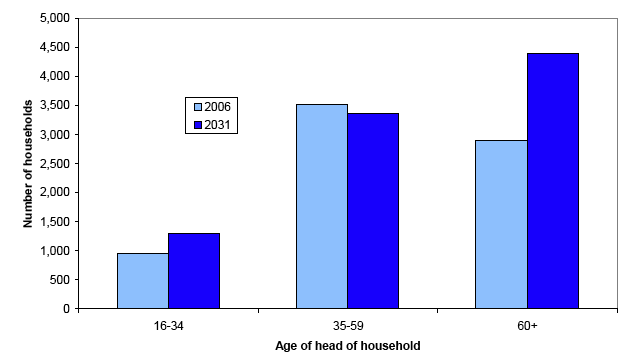
Figure 2.3b: Projected number of households in LLTNP by age of head of household, 2006 and 2031
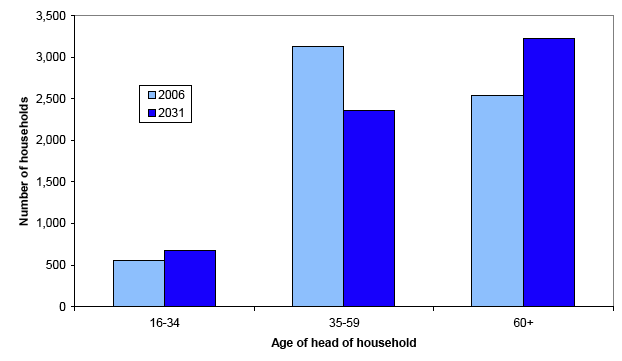
Figure 2.4a(i): Percentage of people living alone in 2006 in CNP, by age and gender
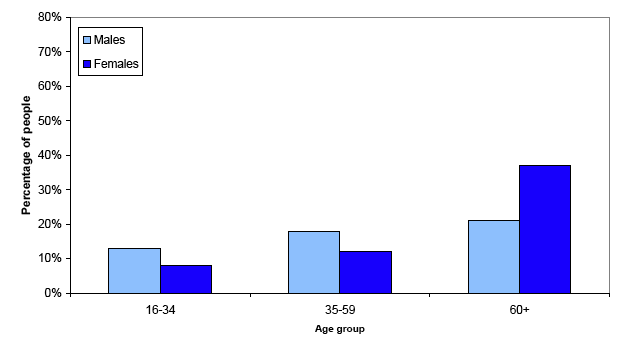
Figure 2.4a(ii): Projected percentage of people living alone in 2031 in CNP, by age and gender
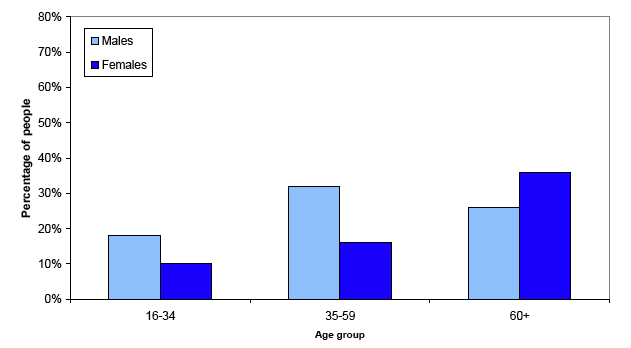
Figure 2.4b(i): Percentage of people living alone in 2006 in LLTNP, by age and gender
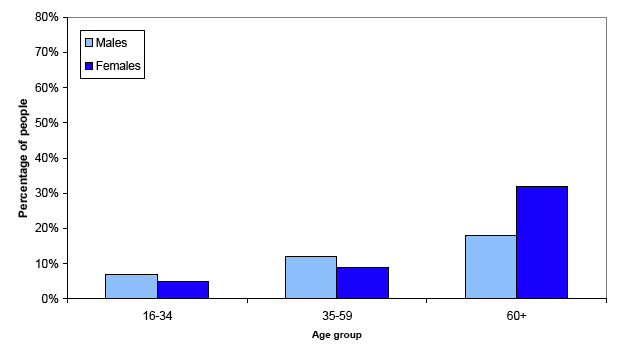
Figure 2.4b(ii): Projected percentage of people living alone in 2031 in LLTNP, by age and gender
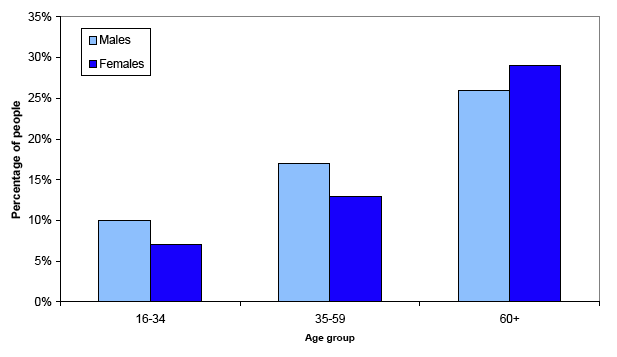
2.2.7 Households containing one adult with children: In 2006, 4 per cent of all households consisted of one adult living with one or more children in LLTNP and 5 per cent in CNP. This percentage is projected to increase to 7 per cent in 2031 for both National Parks.
2.2.8 Households containing two or more adults with children: In both National Parks, there is a projected decrease in the number of households with two or more adults with children. In 2006, 19 per cent of households contained two or more adults with children in LLTNP; this figure is projected to fall to 11 per cent by 2031. Similarly in CNP in 2006, 18 per cent of households contained two or more adults with children and the projected figure in 2031 is 10 per cent.
Figure 2.5a: Projected number of households in the CNP by household type and age of the head of household: 2006 and 2031
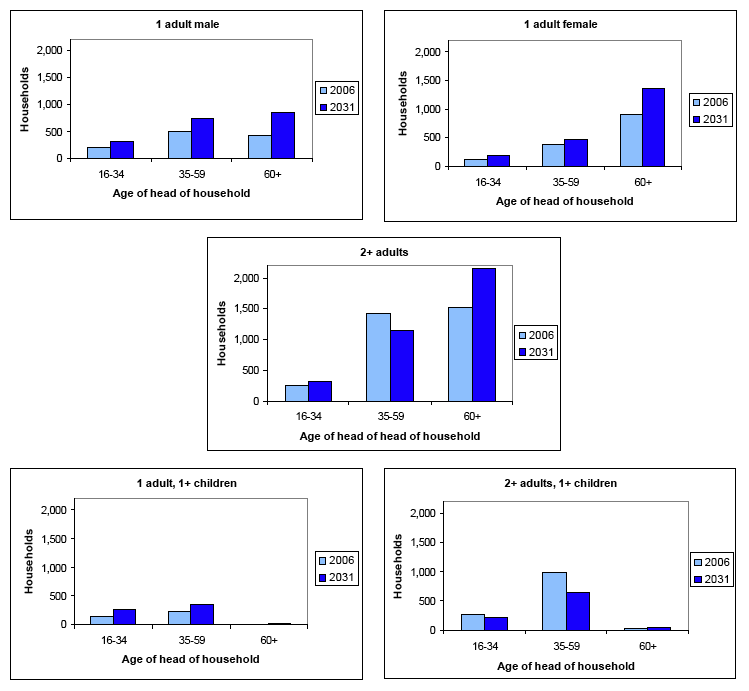
Figure 2.5b: Projected number of households in LLTNP by household type and age of the head of household: 2006 and 2031
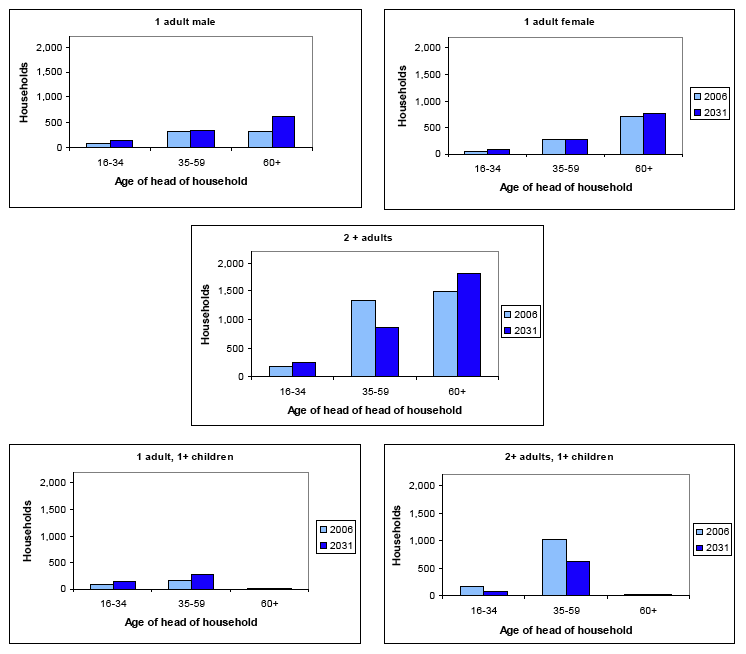
2.3 Notes on the household projections
Uses
2.3.1 Household projections are mainly used for informing decisions about future housing need and service provision, and are used in the production of Development Plans.
Interpreting the projections
2.3.2 These household projections have limitations. A projection is a calculation showing what happens if particular assumptions are made. The household projections are based on the population projections and, as a result assumptions used for the population projections, such as future migration, fertility and mortality, will have an effect on the household projections. The household projections are trend-based and are not, therefore, policy-based forecasts of what the Government expects to happen. They do no take into account social and economic factors that may influence the formation of households, including policies adopted by both central and local government as well as any imbalances between housing supply and demand. In addition, projections for small groups are likely to be less reliable than those for larger groups. This is particularly the case for these National Park projections.
Summary of the methodology
2.3.3 Household projections for National Parks are based on the population projections for National Parks produced by the General Register Office for Scotland (GROS). The number of people living in private households is estimated by taking the population projections for each year and subtracting the number of people living in communal establishments, such as care homes. To estimate the number of households of each type, information on household type and age group is projected forward from the 1991 and 2001 Censuses, for each household type, age group and projection area. This information is applied to the private household population to produce the basic household projections.
2.3.4 The overall projections for Scotland are believed to be more accurate than those for individual areas and therefore the National Park figures and the rest of Scotland are constrained to the Scottish total. The household projections for 2006 and 2007 are then adjusted to match the household estimates for these years for these areas, and the household projections for 2008 onwards are adjusted by the same proportion as the 2007 figures, to preserve the proportion over time.
A more detailed description of household projections methodology can be found at http://www.nrscotland.gov.uk/files/statistics/gros-household-projections-for-scotland-2006-based/j9646b06.htm
Household types and age groups used in the household projections
2.3.5 Household projections are produced for each National Park area, broken down into five household types (based on the number of adults and children living in the household) and three age groups, as follows:
Table A: Household types and age groups used in the household projections
Household types |
Age of head of household |
|---|---|
1 person
households: 2+ person households: |
16-34 |